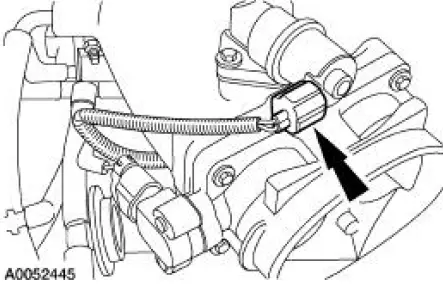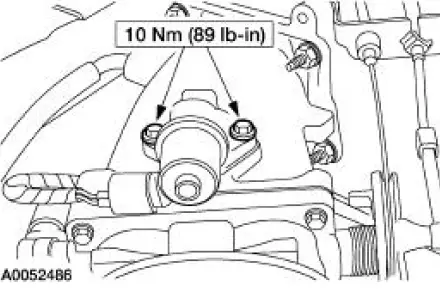Ford Mustang (1999-2004) Service Manual: Idle Air Control (IAC) Valve - Cobra
Removal and Installation
1. Disconnect the idle air control (IAC) valve electrical connector.

2. Remove the bolts, the IAC valve and the gasket.

3. NOTE: Install a new gasket if necessary.
To install, reverse the removal procedure.
 Idle Air Control (IAC) Valve - 4.6L (2V)
Idle Air Control (IAC) Valve - 4.6L (2V)
Removal
1. Disconnect the battery ground cable. For additional information,
refer to Section.
2. NOTE: Discard the idle air control (IAC) valve gasket.
Remove the IAC valve.
Disconnect ...
 Idle Air Control (IAC) Valve - Mach I
Idle Air Control (IAC) Valve - Mach I
Removal and Installation
1. Remove the air intake scoop. For additional
information, refer to Section.
2. Disconnect the idle air control (IAC) valve electrical connector.
3. Remove the bolt ...
Other materials:
Rear Bumper
Removal and Installation
All vehicles
1. Remove the rear bumper cover. For additional information, refer to Rear
Bumper Cover in this
section.
2. Remove the rear bumper cover isolator.
Vehicles with 4.6L engines
3. Remove the bolts and the exhaust outlet pip ...
Manual Transaxle/Transmission - T5OD
General Specifications
Torque Specifications
...
Synchronizers
Disassembly and Assembly
NOTE: This procedure applies to all synchronizer assemblies.
1. Scribe an alignment mark on the sliding sleeve and the hub for assembly
reference.
2. Remove the sliding sleeve, then remove the synchronizer struts and the
springs.
3 ...
